
The Kingdom of Dahomey was a West African kingdom located within present-day Benin that existed from approximately 1600 until 1904. It developed on the Abomey Plateau amongst the Fon people in the early 17th century and became a regional power in the 18th century by expanding south to conquer key cities like Whydah belonging to the Kingdom of Whydah on the Atlantic coast which granted it unhindered access to the tricontinental Atlantic Slave Trade.
Adandozan was a king of the Kingdom of Dahomey, in present-day Benin, from 1797 until 1818. His rule ended with a coup by his brother Ghezo who then erased Adandozan from the official history resulting in high uncertainty about many aspects of his life. Adandozan took over from his father Agonglo in 1797 but was quite young at the time and so there was a regent in charge of the kingdom until 1804. Dealing with the economic depression that had defined the administrations of his father Agonglo and grandfather Kpengla, Adandozan tried to reduce slavery to decrease European trade, and when these failed reform the economy to focus on agriculture. Unfortunately, these efforts did not end domestic dissent and in 1818 at the Annual Customs of Dahomey, Ghezo and Francisco Félix de Sousa, a powerful Brazilian slave trader, organized a coup d'état and replaced Adandozan. He was left alive and lived until the 1860s hidden in the palaces while he was largely erased from official royal history.

Ghezo, also spelled Gezo, was King of Dahomey from 1818 until 1859. Ghezo replaced his brother Adandozan as king through a coup with the assistance of the Brazilian slave trader Francisco Félix de Sousa. He ruled over the kingdom during a tumultuous period, punctuated by the British blockade of the ports of Dahomey in order to stop the Atlantic slave trade.
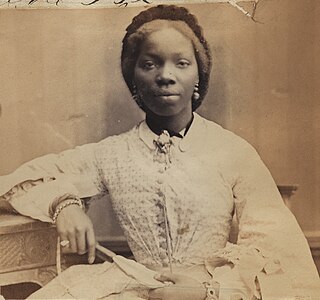
Sara Forbes Bonetta, otherwise known as Sally Forbes Bonetta,, was ward and goddaughter of Queen Victoria. She was believed to have been a titled member of the Egbado clan of the Yoruba people in West Africa, who was orphaned during a war with the nearby Kingdom of Dahomey as a child, and was later enslaved by King Ghezo of Dahomey. She was given as a "gift" to Captain Frederick E. Forbes of the British Royal Navy and became a goddaughter of Queen Victoria. She married Captain James Pinson Labulo Davies, a wealthy Lagos philanthropist.

Klaus Kinski was a German actor. Equally renowned for his intense performance style and notorious for his volatile personality, he appeared in over 130 film roles in a career that spanned 40 years, from 1948 to 1988. He is best known for starring in five films directed by Werner Herzog from 1972 to 1987, who would later chronicle their tumultuous relationship in the documentary My Best Fiend.
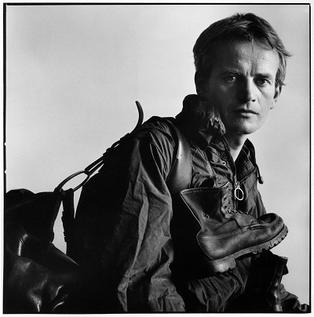
Charles Bruce Chatwin was an English travel writer, novelist and journalist. His first book, In Patagonia (1977), established Chatwin as a travel writer, although he considered himself instead a storyteller, interested in bringing to light unusual tales. He won the James Tait Black Memorial Prize for his novel On the Black Hill (1982), while his novel Utz (1988) was shortlisted for the Booker Prize. In 2008 The Times ranked Chatwin as number 46 on their list of "50 Greatest British Writers Since 1945."

The Dahomey Amazons were a Fon all-female military regiment of the Kingdom of Dahomey that existed from the 17th century until the late 19th century. They were the only female army in modern history. They were named Amazons by Western Europeans who encountered them, due to the story of the female warriors of Amazons in Greek mythology.

Ouidah or Whydah, and known locally as Glexwe, formerly the chief port of the Kingdom of Whydah, is a city on the coast of the Republic of Benin. The commune covers an area of 364 km2 (141 sq mi) and as of 2002 had a population of 76,555 people.

Tomé de Sousa (1503–1579) was the first governor-general of the Portuguese colony of Brazil from 1549 until 1553. He was a nobleman and soldier born in Rates, Póvoa de Varzim. Sousa was born a noble and participated in military expeditions in Africa, fought the Moors and commanded the nau Conceição to Portuguese India, part of the armada of Fernão de Andrade.
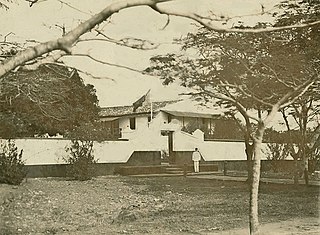
The Forte de São João Baptista de Ajudá is a small restored fort in Ouidah, Benin. Built in 1721, it was the last of three European forts built in that town to tap the slave trade of the Slave Coast. Following the legal abolition of the slave trade early in the 19th century, the Portuguese fort lay abandoned most of the time until it was permanently reoccupied in 1865.
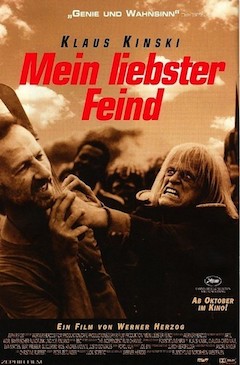
My Best Fiend is a 1999 German documentary film written and directed by Werner Herzog, about his tumultuous yet productive relationship with German actor Klaus Kinski. It was released on DVD in 2000 by Anchor Bay.
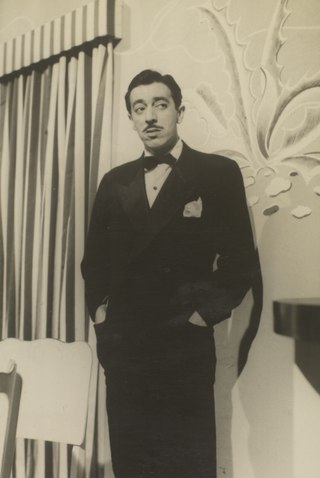
José Lewgoy was a Brazilian actor. He is recognizable to many art-house cinema fans for his role as Don Aquilino in Werner Herzog's 1982 film Fitzcarraldo.

The Viceroy of Ouidah is a novel published in 1980 by Bruce Chatwin, a British author.
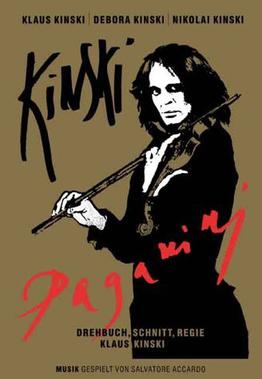
Kinski Paganini, also known simply as Paganini, is a 1989 biographical film written, directed by and starring Klaus Kinski. Based on the life and career of composer and virtuoso violinist Niccolò Paganini, it was Kinski's final film before his death in 1991.

Francisco Félix de Souza was a Brazilian slave trader who was deeply influential in the regional politics of pre-colonial West Africa. He founded Afro-Brazilian communities in areas that are now part of those countries, and went on to become the "chachá" of Ouidah, a title that conferred no official powers but commanded local respect in the Kingdom of Dahomey, where, after being jailed by King Adandozan of Dahomey, he helped Ghezo ascend the throne in a coup d'état. He became chacha to the new king, a curious phrase that has been explained as originating from his saying "(...) já, já.", a Portuguese phrase meaning something will be done right away.

Location Africa is a 1987 documentary film by Swiss filmmaker Steff Gruber.
The History of the Kingdom of Dahomey spans 400 years from around 1600 until 1904 with the rise of the Kingdom of Dahomey as a major power on the Atlantic coast of modern-day Benin until French conquest. The kingdom became a major regional power in the 1720s when it conquered the coastal kingdoms of Allada and Whydah. With control over these key coastal cities, Dahomey became a major center in the Atlantic Slave Trade until 1852 when the British imposed a naval blockade to stop the trade. War with the French began in 1892 and the French took over the Kingdom of Dahomey in 1894. The throne was vacated by the French in 1900, but the royal families and key administrative positions of the administration continued to have a large impact in the politics of the French administration and the post-independence Republic of Dahomey, renamed Benin in 1975. Historiography of the kingdom has had a significant impact on work far beyond African history and the history of the kingdom forms the backdrop for a number of novels and plays.
King Ampaw is a Ghanaian filmmaker and actor born in Kukurantumi in the Eastern Region of Ghana. He is known for starring as the second lead role with the late Hollywood actor, Klaus Kinski in Werner Herzog's sensational film Cobra Verde (1987) which he also co-produced. He also co-produced the film African Timber (1989) directed by Peter F. Bringmann. He is married with two sons.

Nomad: In the Footsteps of Bruce Chatwin is a 2019 British documentary film by German director Werner Herzog. It chronicles the life of British travel writer Bruce Chatwin and includes interviews with Chatwin's widow, Elizabeth Chatwin, and biographer Nicholas Shakespeare, as well as detailing Herzog's own friendship and collaboration with the man.
The De Souza family, otherwise known as the De Sousa family, is a prominent Beninese clan. Its founder, Francisco Felix de Sousa, was the Brazilian-born viceroy of Ouidah in the Kingdom of Dahomey.
















